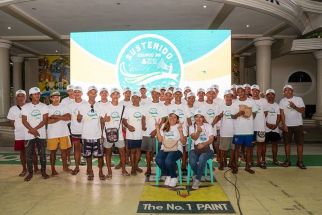Cabbage

This will be a test of our fortitude.
This week, the most serious skirmish happened between Chinese ships and Filipino vessels out to resupply our outpost at Ayungin Shoal. The Chinese ships used water cannons, shattering the windshield of one of our vessels, injuring four Filipino seamen.
The Chinese were prepared for this skirmish. Their Coast Guard personnel had their life vests on.
This latest incident at the Ayungin Shoal, even as it was the most serious to date, will not be the last. We will continue with this spectacle for many more years to come – escalating in small notches.
The Philippine government prudently declared this incident did not warrant invoking our Mutual Defense Treaty with the US. This was the correct decision to make.
A US Navy vessel was in the vicinity of the incident and was generally kept away by the small Chinese flotilla trying to prevent the resupply of the Filipino outpost. China’s navy prefers to keep their tactics gray. These tactics will be carefully calibrated to keep within the threshold of war.
This should be clear: there is no meaningful distinction between the Chinese Navy, its Coast Guard and the so-called naval militia that are often deployed in large numbers. They all operate in concert and with a single chain of command.
China uses what has been called a “cabbage strategy.” Using sheer numerical and force superiority, they will gradually envelope the target.
This is the same strategy they are using at the Taiwan Strait. Using training maneuvers, brief incursions and air force overflights, China is hoping to exhaust the Taiwanese defense forces and wear them down until they lose the fortitude to continue resisting.
In the South China Sea, China will try to tire out the Philippine Navy and Coast Guard until we accept their version of the status quo, conceding to their control of international sea lanes and accepting their growing military presence. Beijing is playing the long game here.
Ayungin Shoal is our most vulnerable point. A small detachment of Philippine Marines are holding fort in a grounded and rusting ship. It requires constant resupply from Palawan over a large distance.
At some point, the BRP Sierra Madre will succumb to the elements unless we are somehow able to build sturdier structures in the shoal. Attempting to build our own military base in the shoal will invite even more intense confrontations with the Chinese fleet in the area.
Time is not our friend. China knows that. They will apply just enough pressure on the resupply missions to discourage any effort to actually build a base.
They hope this long game will eventually exhaust us until we are ready to surrender that shoal.
Underutilized
Had we decided to continue hosting US bases in Clark and Subic, the situation in the West Philippine Sea might have been very different. China might have been discouraged from occupying Panatag (Scarborough) Shoal and building military facilities at the Spratlys.
But, for better or for worse, fateful decisions were taken over three decades ago. We might rue over the outcomes but we cannot change the facts on the ground.
After we expelled the US bases, we expected to rapidly shift the facilities to profitable commercial use. But even there, we lagged.
To this day, for instance, the full potential of Subic Bay’s deep water port has yet to be realized to serve our economic development.
In 2010, a Joint Venture Agreement was signed between the Subic Bay Management Authority (SBMA) and the Harbor Centre Port Terminal Inc. (HCPTI) to operate what used to be the US Naval Supply Depot along with the nearby ports of Boton, Alava, Rivera and Bravo. The joint venture agreement was supposed to be for 25 years.
Half of that period has already passed. Hardly any development has happened as HCPTI continues to wrestle with about a dozen long-time locators who try to trip the joint venture agreement every step of the way.
Despite the unyielding opposition of the original locators, armed with their long-term leases to parts of the port facility, HCPTI tries to move forward in building a world-class integrated port facility that could host new businesses, generate more income and provide even more employment opportunities. The process resembles a movie in slow motion.
After much legal wrangling, the Supreme Court upheld the validity of the joint venture agreement. The ruling recognized HCPTI as the only entity fully authorized to develop, operate and manage the ports inside the former American base. That has not brought peace and development to the port, however.
Having exhausted all legal channels, the group of locators are now doing their best to win public opinion against the holder of the joint venture agreement. The HCPTI, as is normal business practice, collects fees from vessels using their facilities. The locators are labelling this normal business practice as a form of shakedown.
As a gesture of good faith, and to facilitate a more peaceful transition, HCPTI offered locators a chance to share revenues generated by business in the joint venture areas. This arrangement was proposed by the SBMA to achieve a more harmonious relationship. In most instances, this concession is keeping the locators in business. But the locators are claiming that HCPTI is forcing them out of business – even if they all signed a letter of conformity to this arrangement.
Things are moving, but only very slowly, at Subic.
- Latest
- Trending






























